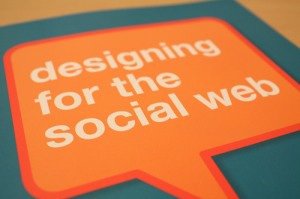Interview 2.0: Using Social Media to Prepare Students for the Workplace
Post wisely and you can take advantage of your (permanent) digital footprint.
Your content has been saved!
Go to My Saved Content."Please submit a letter of interest and a resume by mail only. No electronic submissions will be accepted."
- In the comments section listed below, please list your first impression of this statement.

The 21st century job market is dynamic. The jobs of tomorrow have not been created and the jobs of today will soon be replaced. This is the world we live in and we need to keep a consistent pace with how we hire and how we seek out talent.
A few weeks ago I encountered a unique experience in my career. I visited Burlington High School in Burlington, MA. Their principal Patrick Larkin invited me. I had never met Patrick before, nor did I ever send him a resume or cover letter. So how did I end up at Burlington High School? Social networking. And more specifically, Twitter. I was offered a position at Burlington HS -- and all because of my social networking presence.
One of the main reasons I was offered this position was because of my responsible, dynamic presence on various social networks. I realize that everything I post to the web becomes public record and part of my digital footprint. There is a sound bite in the trailer for the upcoming movie, The Social Network that says, "The Internet is not written in pencil Mark, it's written in ink." This statement defines the 21st century profile. Everything we post becomes a part of who we are.
Many of my current and former students don't realize the impact of the digital footprint. It is defining who we are before we even open our mouths. Everything we post, tag, and comment on become our voice, our personality. There is no room for explanation or follow up. We are conducting silent interviews daily by what we add to our profiles. Students entering college and the job market must be aware of and understand this rapidly changing landscape.
However, a responsible digital presence is not the only lesson we must teach to students wandering into the vast social network. Students must learn to use social networking sites to their advantage. Educators must also instruct parents, administrators, and teachers how to incorporate this type of learning into their teaching.
Last week I took my entire portfolio to a wikispace. Everything I have done in my career is live and visible to prospective employers. I am proud of my work and I want to showcase my talents in the best way possible. The links are live and all of my digital media that I have created is accessible. The wikispace illustrates who I am as an educator and allows all to see what I have done in a dynamic format. I hope this model will interest students and show them what can happen when you maintain a responsible digital footprint. Let's abolish all taboos that are associated with social networking and start highlighting the advantages. If we continue this path of blocking and restricting, our students will surely be left behind in a dynamically changing world.
I heard the first glimmer of this new connotation last January when I was in a session on digital portfolios at Educon 2.2. The group was discussing various platforms for digital portfolios, what to include, and how to use them effectively and dynamically. There was an SLA (Science Leadership Academy) student in the room with us as well. The student raised her hand and said she used Facebook for her portfolio. Several educators in the room questioned what she put up there and was she aware of the connotations that go along with Facebook. She was aware and using Facebook responsibly and effectively. She was interested in creative writing and she was using Facebook to promote her work. She only posted material that she deemed appropriate and refrained from having thousands of pictures from her social life. This was all exciting to hear.
The student from SLA is one example of how students can use social networking effectively. Students use these forums every day and they are not going away. They will only evolve and become more widespread and accepted by all who seek out a letter of acceptance to college or employment. Do not restrict these forums, but teach students how to use them to their advantage. Show them what can happen when you use them inappropriately. Empower students to use social media to help them achieve their goals for life. These tools can put up a roadblock OR help you arrive at your desired destination. If we deny access, we stunt the digital growth and presence of our most talented learners.